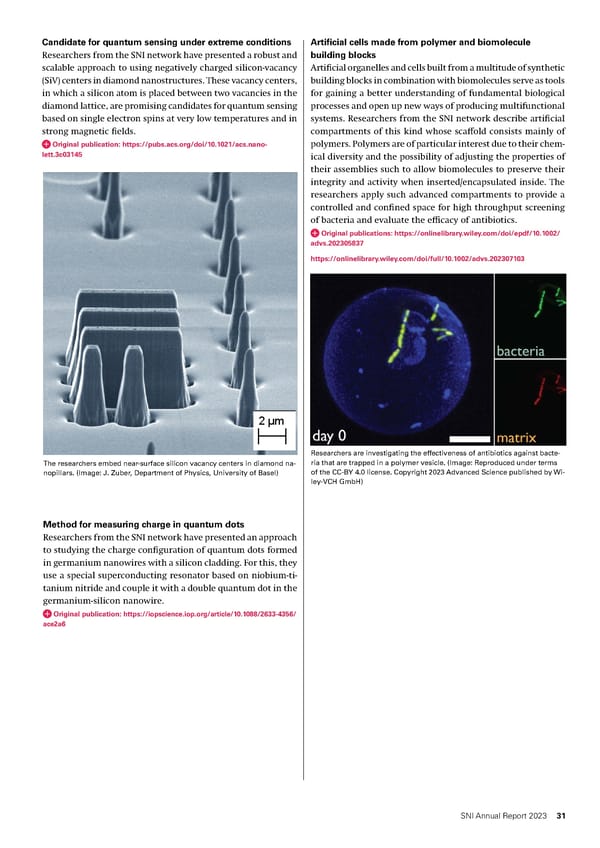Candidate for quantum sensing under extreme conditions Arti昀椀cial cells made from polymer and biomolecule Researchers from the SNI network have presented a robust and building blocks scalable approach to using negatively charged silicon-vacancy Arti昀椀cial organelles and cells built from a multitude of synthetic (SiV) centers in diamond nanostructures. These vacancy centers, building blocks in combination with biomolecules serve as tools in which a silicon atom is placed between two vacancies in the for gaining a better understanding of fundamental biological diamond lattice, are promising candidates for quantum sensing processes and open up new ways of producing multifunctional based on single electron spins at very low temperatures and in systems. Researchers from the SNI network describe arti昀椀cial strong magnetic 昀椀elds. compartments of this kind whose sca昀昀old consists mainly of Original publication: https://pubs.acs.org/doi/10.1021/acs.nano- polymers. Polymers are of particular interest due to their chem- lett.3c03145 ical diversity and the possibility of adjusting the properties of their assemblies such to allow biomolecules to preserve their integrity and activity when inserted/encapsulated inside. The researchers apply such advanced compartments to provide a controlled and con昀椀ned space for high throughput screening of bacteria and evaluate the e昀케cacy of antibiotics. Original publications: https://onlinelibrary.wiley.com/doi/epdf/10.1002/ advs.202305837 https://onlinelibrary.wiley.com/doi/full/10.1002/advs.202307103 Researchers are investigating the effectiveness of antibiotics against bacte- The researchers embed near-surface silicon vacancy centers in diamond na- ria that are trapped in a polymer vesicle. (Image: Reproduced under terms nopillars. (Image: J. Zuber, Department of Physics, University of Basel) of the CC-BY 4.0 license. Copyright 2023 Advanced Science published by Wi- ley-VCH GmbH) Method for measuring charge in quantum dots Researchers from the SNI network have presented an approach to studying the charge con昀椀guration of quantum dots formed in germanium nanowires with a silicon cladding. For this, they use a special superconducting resonator based on niobium-ti- tanium nitride and couple it with a double quantum dot in the germanium-silicon nanowire. Original publication: https://iopscience.iop.org/article/10.1088/2633-4356/ ace2a6 SNI Annual Report 2023 31
 Annual Report 2023 Page 30 Page 32
Annual Report 2023 Page 30 Page 32